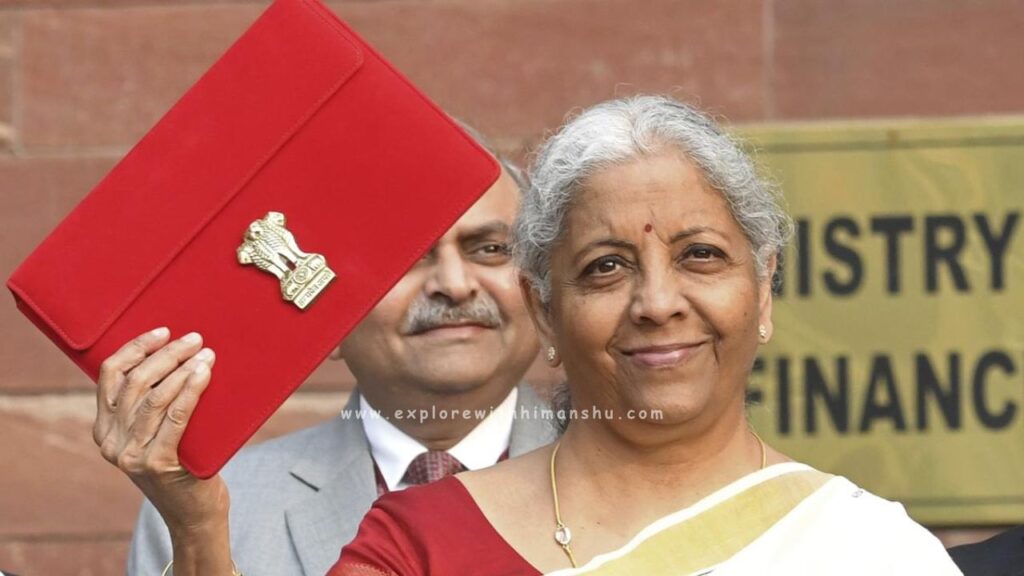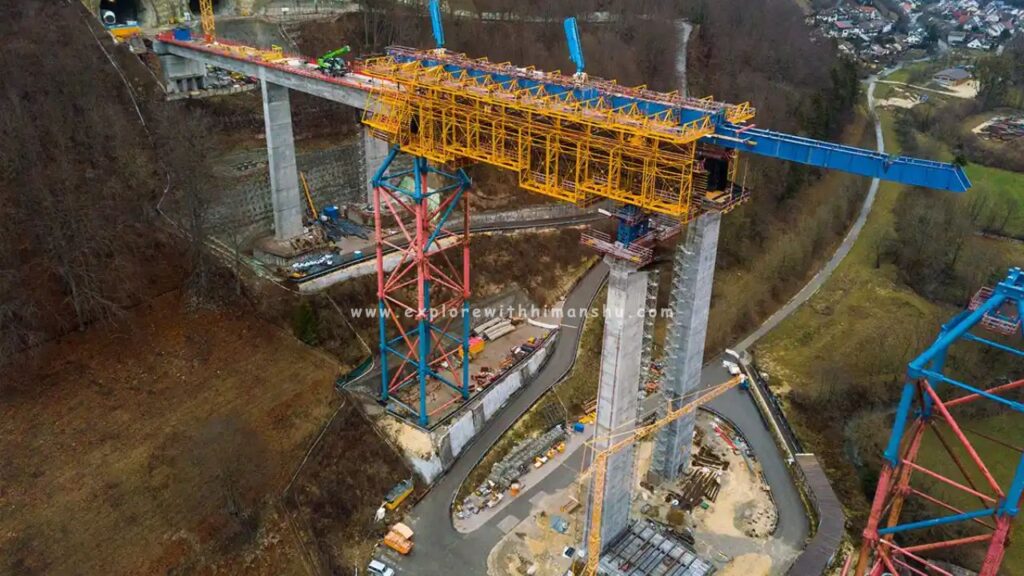The Union Budget 2025, presented by Finance Minister Nirmala Sitharaman, marks a pivotal moment in India’s economic trajectory. Amidst the evolving global landscape, India’s path toward sustainable and inclusive growth requires a combination of strategic investments, reforms, and forward-thinking policies. The budget focuses on critical areas such as taxation, infrastructure, agriculture, manufacturing, and green energy—each aimed at supporting the nation’s long-term goals of prosperity and resilience.
In this blog, we will break down the key highlights of the Union Budget 2025 and discuss how these decisions will shape India’s future.

1. A Progressive Tax Structure: Boosting Economic Growth
The Union Budget 2025 introduces a major reform in personal income tax, aimed at providing relief to the middle class and stimulating household consumption. With a strong emphasis on tax simplification, the government has taken steps to make tax policies more transparent, equitable, and growth-oriented.
Key Income Tax Reforms:
- Tax Exemption Limit Increased: The tax exemption threshold has been raised significantly to ₹12.5 lakh per annum, offering much-needed relief to salaried individuals.
- Lower Tax Slabs: The government has reduced tax rates across higher-income brackets, ensuring that those earning more contribute proportionally, while enabling them to retain more of their earnings.
- Increased Standard Deductions: Higher standard deductions are now available, making it easier for individuals to claim tax relief.
These changes are expected to give a significant boost to consumer confidence, as higher disposable income will lead to increased spending. This is a vital strategy to support consumption-driven growth, particularly in sectors like retail and automobiles.
Reflecting on how consumer spending plays a critical role in driving economic momentum, it’s essential to remember how festivals like Vasant Panchami in India are celebrated with great enthusiasm. These occasions boost retail sales, local businesses, and the service sector. For a deeper dive into how Indian cultural celebrations fuel the economy, check out my post on Vasant Panchami at Explore with Himanshu.
2. Strengthening Agriculture: A Focus on Rural Prosperity
India’s agricultural sector is the backbone of its economy, employing a significant portion of the population. The Union Budget 2025 allocates a historic amount to boost agricultural productivity, rural infrastructure, and farmer welfare. The government aims to make farming more sustainable, profitable, and resilient to climate change.
Agriculture and Rural Development Highlights:
- Increased Funding for Agricultural Research: The budget has earmarked a large sum for research into high-yielding and climate-resilient crops.
- Improved Storage and Supply Chain Infrastructure: To reduce post-harvest losses and ensure that farmers get better prices for their produce, significant investments are being made in storage facilities and cold chains.
- Loan Support for Farmers: The limit for concessional agricultural loans has been increased to ₹500,000, providing farmers with greater financial flexibility.
In addition to these initiatives, the government is promoting sustainable farming practices, aiming to increase the adoption of organic farming, water conservation techniques, and agroforestry.
This renewed focus on agriculture echoes the importance of rural India in driving national growth. To understand the cultural significance of rural communities and agriculture, check out my previous post on how festivals like Vasant Panchami celebrate harvests and rural traditions, which are closely linked to agricultural cycles. You can read more about it here.

3. Infrastructure Development: Building a Strong Foundation for the Future
The Union Budget 2025 places heavy emphasis on infrastructure development. Robust infrastructure is crucial for India’s continued growth, economic modernization, and job creation. The government has allocated a record ₹11.21 trillion for infrastructure, with a clear focus on transportation, smart cities, green energy systems, and rural connectivity.
Key Infrastructure Investments:
- Highways and Expressways: Significant investments in road infrastructure will create jobs and boost connectivity across regions, improving access to markets for businesses and consumers alike.
- Railways and Metro Systems: Plans are in place to expand India’s metro systems in Tier-2 and Tier-3 cities, further enhancing urban mobility.
- Smart Cities and Digital Infrastructure: A strong emphasis on building smart cities through IoT and digital infrastructure will make urban spaces more efficient and livable.
This commitment to infrastructure growth will play a critical role in boosting industrialization and supporting the expansion of the manufacturing and services sectors. To better understand how India’s focus on technological and urban innovation aligns with global trends, check out my post on Smart Cities and Digital Transformation at Explore with Himanshu.
4. Green Energy and Sustainability: A Commitment to the Future
Sustainability remains a priority in India’s economic roadmap. With global pressure on nations to reduce carbon footprints and invest in clean energy, the Union Budget 2025 presents several initiatives to accelerate the transition to green energy.
Green Energy and Sustainability Initiatives:
- Increased Funding for Renewable Energy: The government has committed to expanding India’s renewable energy capacity by investing in solar, wind, and hydrogen energy.
- Electric Vehicles (EVs): Increased funding for EV infrastructure, including charging stations, and incentives for manufacturers, is expected to drive India’s transition toward greener mobility.
- Climate Finance and Green Bonds: The introduction of green bonds and climate finance mechanisms will help raise capital for eco-friendly projects.
This transition is critical for India’s long-term environmental and economic health. It also ties into India’s efforts to become a leader in sustainable development on the global stage. For a deeper dive into the challenges and opportunities in green technology, you can explore my previous blog on India’s Green Economy at Explore with Himanshu.
5. Financial Sector Reforms: Fostering Innovation and Growth
The Union Budget 2025 introduces several measures to improve the health and efficiency of the financial sector, laying the foundation for greater access to capital and improved financial services.
Financial Reforms:
- Easier Access to Credit: The government has introduced measures to improve the accessibility of credit for small and medium businesses, entrepreneurs, and startups.
- Incentives for Fintech Innovation: The introduction of new digital financial products and fintech startups will drive innovation in the financial sector.
- Strengthening Banking Infrastructure: Significant reforms are planned to modernize the banking system, improve financial literacy, and ensure financial inclusion for all citizens.
These reforms are expected to stimulate entrepreneurship and investment in emerging sectors such as fintech and digital banking. To learn more about the role of financial services in India’s growth, check out my post at Explore with Himanshu.

6. The Road Ahead: Addressing Challenges and Opportunities
While the Union Budget 2025 offers a solid foundation for India’s growth, it is important to acknowledge the challenges that lie ahead. These include global economic uncertainties, inflationary pressures, and the need for inclusive development to ensure no one is left behind.
Key Challenges:
- Global Economic Conditions: Ongoing geopolitical tensions and slow global recovery could impact India’s export-oriented sectors.
- Inflation: The government needs to balance economic growth with measures to control inflation, especially in essential goods and services.
- Ensuring Inclusivity: The government must ensure that the benefits of growth are distributed equitably, especially to marginalized communities and rural areas.
However, the Union Budget 2025 provides a comprehensive roadmap to tackle these challenges through smart policies, strategic investments, and a clear focus on sustainable development.
Conclusion:
The Union Budget 2025 is an ambitious and forward-looking plan for India’s economic future. With a focus on tax reforms, agriculture, infrastructure, green energy, and financial sector modernization, this budget lays the foundation for a resilient and inclusive economy.
As India continues to push the boundaries of innovation, sustainability, and economic transformation, it is essential to remember that true growth comes from nurturing every sector—rural and urban, traditional and modern. By fostering a collaborative ecosystem between the government, private sector, and citizens, India can move toward a more prosperous, equitable, and sustainable future.


